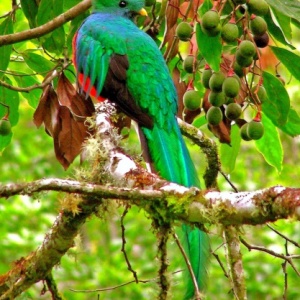
This paper argues that the failure of protected areas to guard biodiversity partly reflects a lack of science available. The paper offers strategic guidance on the types of science needed to be conducted so protected areas can be placed and managed in ways that support the overall goal to avert biodiversity loss.
The paper suggests three ways forward:
- Establish ecologically sensible protected area targets to help prioritize important biodiversity areas and achieve ecological representation.
- Identify clear, comparable performance metrics of ecological effectiveness so conservationists can assess progress toward the targets.
- Identify metrics and report on the contribution of "other effective area-based conservation measures (OECMs) make toward the target.
Abstract
Recognising that protected areas (PAs) are essential for effective biodiversity conservation action, the Convention on Biological Diversity established ambitious PA targets as part of the 2020 Strategic Plan for Biodiversity. Under the strategic goal to “improve the status of biodiversity by safeguarding ecosystems, species and genetic diversity”, Target 11 aims to put 17% of terrestrial and 10% of marine regions under PA status by 2020. Additionally and crucially, these areas are required to be of particular importance for biodiversity and ecosystem services, effectively and equitably managed, ecologically representative and well connected, and to include “other effective area-based conservation measures” (OECMs). While the area-based targets are explicit and measurable, the lack of guidance for what (i) “important” and “representative”; (ii) ”effective”; and (iii) OECMs means is affecting how nations are implementing the target. There is a real risk that Target 11 may be achieved in terms of area while failing the overall strategic goal for which it is established, because the areas are poorly located, inadequately managed, or based on unjustifiable inclusion of OECMs. We argue that the conservation science community can help: (i) establish ecologically-sensible PA targets to help prioritize important biodiversity areas and achieve ecological representation; (ii) identify clear, comparable performance metrics of ecological effectiveness so we can assess progress toward these targets; and (iii) identify metrics and report on the contribution OECMs make towards the target. By providing ecologically-sensible targets and new performance metrics for measuring the effectiveness of both PAs and OECMs, the science community can actively ensure that the achievement of the required area in Target 11 is not simply an end in itself, but generates genuine benefits for biodiversity.
Citation
Watson, J. E. M., Darling, E. S., Venter, O., Maron, M., Walston, J., Possingham, H. P., Dudley, N., Hockings, M., Barnes, M., Brooks, T. M. (2015) Bolder science needed now for protected areas. Conservation Biology, 2015; DOI: 10.1111/cobi.12645
Read the full paper here. You can find further coverage of the paper here.
You will find related resources in the following research library categories: biodiversity and ecosystems, conservation, ecosystems and ecosystem services, landscape biodiversity, plant biodiversity







Post a new comment »